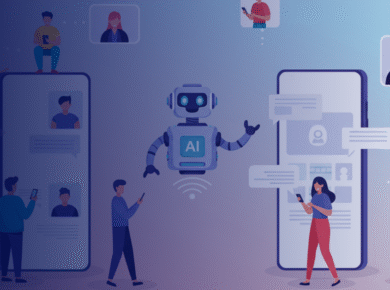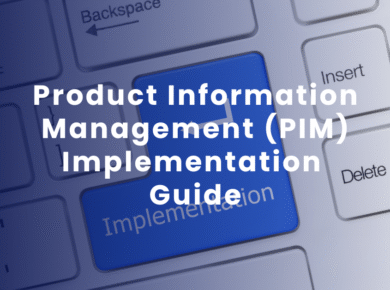How GenAI Is Set to Redefine Enterprise Innovation in 2026? Read Blog
As organizations advance into an AI-first era, 2026 will be a key year for innovation in businesses. Generative AI (GenAI) is no longer just a technology for labs or pilot projects. It has grown into a key tool that changes how companies operate, compete, and provide value. With AI spending expected to exceed $300 billion worldwide by 2026, and more than 40% of enterprise workflows likely to be managed independently, this change is both deep and unstoppable.
What makes 2026 especially important is not just the rapid adoption of AI but also the development of ready-to-use GenAI ecosystems. These ecosystems combine product data, digital assets, commerce platforms, cloud infrastructure, and customer-facing systems into smart, self-improving environments. For businesses with large product catalogs, intricate supply chains, or multi-channel digital experiences, GenAI is redefining what can be automated, improved, and tailored to individual needs.
Why GenAI Will Become the Core Engine of Enterprise Systems?
Unlike traditional AI, which focuses on pattern recognition, GenAI allows automatic creation, reasoning, contextual analysis, and data-driven decision-making. This mix of abilities makes it especially useful for companies that handle changing data environments.
In 2026, GenAI will connect data sources, operational processes, and customer-facing applications. By improving workflows in data management, product lifecycle processes, content operations, and digital commerce, GenAI will help companies respond more quickly and work with greater intelligence.
Some of the most transformative shifts include:
- AI-native data ecosystems, where product data, content, and assets are constantly improved, checked, and organized.
- Generative automation in commerce and customer experience, allowing quicker content creation, personalized experiences, and immediate recommendations.
- Multi-modal intelligence, where text, images, videos, and structured data connect to unified decision systems.
- AI-governed operational workflows, decreasing reliance on humans for repetitive or rule-based tasks.
The 2026 Enterprise Landscape: GenAI-Led Innovations
1. Intelligent Data Foundations Will Become Mandatory: Businesses are increasingly recognizing that AI depends on the quality of the data behind it. More than 65% of organizations cite data inconsistency as a hurdle to using AI. By 2026, we will see a significant shift toward standardized data models, centralized repositories, and structured knowledge management. GenAI will play a key role in:
- Auto-classifying large volumes of data.
- Normalizing product catalogs.
- Improving metadata.
- Identifying gaps and inconsistencies in data.
- Suggesting missing attributes or relationships.
This approach helps businesses create stable, AI-ready data foundations that support automation and informed decision-making at scale.
2. Product Ecosystems Will Become Self-Managing: As commerce environments change, product-related tasks—from onboarding to categorization to syndication—will increasingly be handled by AI. Industries such as retail, manufacturing, automotive, and B2B distribution will see significant benefits from this shift. GenAI will help with:
- Creating structured product descriptions from unstructured inputs.
- Contextualizing product data based on channel needs.
- Auto-tagging digital assets.
- Predicting missing attributes or compatibility data.
- Maintaining catalog quality during busy seasons.
These AI-driven capabilities lower manual workload, speed up time-to-market, and improve consistency across platforms.
3. Digital Commerce Will Shift Toward Predictive Personalization: Commerce in 2026 will be defined by experiences that feel personal, intuitive, and dynamically generated. With customers expecting hyper-relevant interactions, GenAI-powered models will analyze behavioral data, purchase patterns, product relationships, and micro-intents to deliver tailored experiences.
Key improvements will include:
- Real-time product recommendations.
- Dynamic content generation.
- AI-driven merchandising.
- Intelligent up-selling and cross-selling.
- Demand forecasting for seasonal periods.
GenAI allows commerce platforms to respond immediately to customer signals, market changes, and inventory updates.
4. Content and Experience Operations Will Become AI-Augmented: Enterprises are under pressure to deliver content at scale across devices, regions, products, and formats. By 2026, over 70% of enterprise content operations are expected to use GenAI-driven workflows.
AI will support:
- Multi-language content generation.
- Topic modeling and semantic clustering.
- Automated content structuring for CMS and DXP systems.
- Visual asset transformation and tagging.
- Faster publishing cycles with integrated governance.
Instead of replacing teams, GenAI will act as a productivity multiplier. It will allow teams to concentrate on creativity and strategy while AI takes care of high-volume tasks.
5. AI-Enabled Decision Intelligence Will Drive Operational Efficiency: The next wave of enterprise AI will focus on being predictive and prescriptive. GenAI will not only provide insights but also recommend actions, simulate business scenarios, and guide operational decisions. This shift will be visible in:
- Supply chain forecasting.
- Pricing optimization.
- Inventory intelligence.
- Customer service orchestration.
- Workflow automation across departments.
By combining historical knowledge with real-time data signals, GenAI helps organizations respond faster and remain resilient in changing environments.
Preparing for 2026: What Enterprises Need to Start Building Now?
To make the most of GenAI-led innovation, businesses need to focus on improving the key parts of their digital systems. Some important areas to address include:
- Establishing unified data models across systems.
- Creating managed repositories for product data and digital assets.
- Updating old systems to be ready for the cloud.
- Implementing scalable master data practices.
- Building flexible digital experience structures.
- Standardizing taxonomy and metadata frameworks.
- Developing roadmaps and governance models for AI readiness.
These basic steps help ensure that GenAI can function reliably, ethically, and achieve measurable results.
Key Takeaways
- GenAI will be the main engine of business innovation in 2026. It will make operations smarter and more independent across data, commerce, and experience layers.
- Intelligent data ecosystems are crucial because AI needs high-quality, consistent, and enriched information to provide value.
- Product information systems will become more automated. This will reduce manual work and improve accuracy across channels.
- Digital commerce will move towards personalized, AI-driven predictions. This will enhance engagement and conversion rates.
- Content and customer experience operations will achieve significant productivity gains. AI will support teams across different languages, formats, and platforms.
- AI-powered decision intelligence will help businesses become resilient. They will be able to respond quickly to market changes and operational challenges.
- The most successful organizations in 2026 will be those that invest early in data, architecture, governance, and scalable AI foundations.
Latest Resources
How Will GenAI Redefine the Hybrid Shopper Experience? Read Blog Holiday shopping
How Unified Data Can Keep You Ahead This Holiday Read Blog As
Enterprise Data Management in Transition: 2026 Trends and AI-Driven Shifts Read Blog
Unlocking Growth: Why PIM DAM Integration Is a Strategic Imperative Read Blog
Mastering Product Data Syndication: A Business-Centric Approach Read Blog Why Accurate Product
The Hidden Costs of Missing Metadata in Digital Asset Management Read Blog
Key Takeaways: Identify the Right Time for PIM: Gain clarity on identifying
PIM vs MDM: What’s the Difference and When to Use Each? Read
Questions to Ask When Choosing a PIM Vendor? - Part 2 Read










